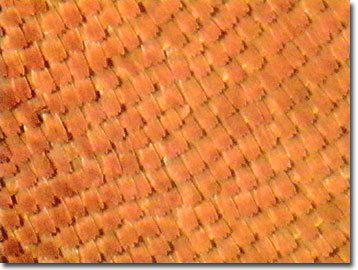Butterfly Wing Scale Digital Image Gallery
Viceroy Butterfly
People often associate Kentucky with fried chicken, tobacco farms, and horse racing. Many are not aware, however, of the official Kentucky state insect, the viceroy butterfly. The mimetic butterflies flourish and flutter throughout the Bluegrass State where they prefer to inhabit moist areas along the shores of lakes, but also frequent wet meadows and roadsides that feature willow thickets.

Viceroy butterflies, scientifically known as Limenitis archippus, usually display the orange and black coloration of the monarch butterfly on the upper sides of their forewings and hind wings. In Florida, Georgia, and the American Southwest where monarch butterflies are relatively rare, however, viceroy butterflies are a deep mahogany brown rather than orange and are better mimics of the queen butterfly. The viceroy butterfly can be readily separated from the similar looking species by its smaller size and weaker wing beats. Also, unlike the monarch and queen butterflies, the viceroy butterfly features a black line with a single row of white spots across its hind wings.
Behavioral entomologists are divided on whether or not the viceroy butterfly is a Batesian or Müllerian mimic. If it is Batesian, the species is palatable but imitates a noxious insect to avoid predation. If it is Müllerian, as most recent research indicates, the species is unpalatable, but mimics the pattern of other noxious species in order to decrease the number of butterflies sacrificed during the learning process of predators. In fact, the latest studies show that the viceroy butterfly may be less palatable than either of its similarly colored counterparts, which would indicate that the monarch and queen butterflies benefit more from the mimicry than the viceroy.
Male viceroy butterflies feature a perch and patrol behavior. For a short time, the male butterflies will perch on the ground or low vegetation and then patrol for about 20 meters to another perch. The flight pattern is repeated back and forth. Highly territorial, if two males meet in the same area, they break their flight path and abruptly soar 50 meters or more into the air in an active display of aggression. When secure once again, males continue to seek receptive females and mating usually occurs in the afternoon.
Larval viceroy butterflies display various means of protective behavior in order to remain relatively safe while consuming their favorite foods. The caterpillars feed at night on the tree leaves of willows, cottonwoods, and poplars. As they eat, the young caterpillars create a mass of leaf bits, frass, and silk, which dangles from the leaf being devoured and may distract potential predators. The larvae are further protected by cryptic coloration. Their drab olive bodies are covered with white saddles or blotches that resemble bird droppings on a leaf or branch.
Contributing Authors
Cynthia D. Kelly, Shannon H. Neaves, Laurence D. Zuckerman, and Michael W. Davidson - National High Magnetic Field Laboratory, 1800 East Paul Dirac Dr., The Florida State University, Tallahassee, Florida, 32310.
BACK TO THE BUTTERFLY WING SCALE IMAGE GALLERY
BACK TO THE DIGITAL IMAGE GALLERIES
Questions or comments? Send us an email.
© 1995-2025 by Michael W. Davidson and The Florida State University. All Rights Reserved. No images, graphics, software, scripts, or applets may be reproduced or used in any manner without permission from the copyright holders. Use of this website means you agree to all of the Legal Terms and Conditions set forth by the owners.
This website is maintained by our
Graphics & Web Programming Team
in collaboration with Optical Microscopy at the
National High Magnetic Field Laboratory.
Last Modification Friday, Nov 13, 2015 at 01:19 PM
Access Count Since January 21, 2003: 9812
Visit the website of our partner in introductory microscopy education:
|
|
